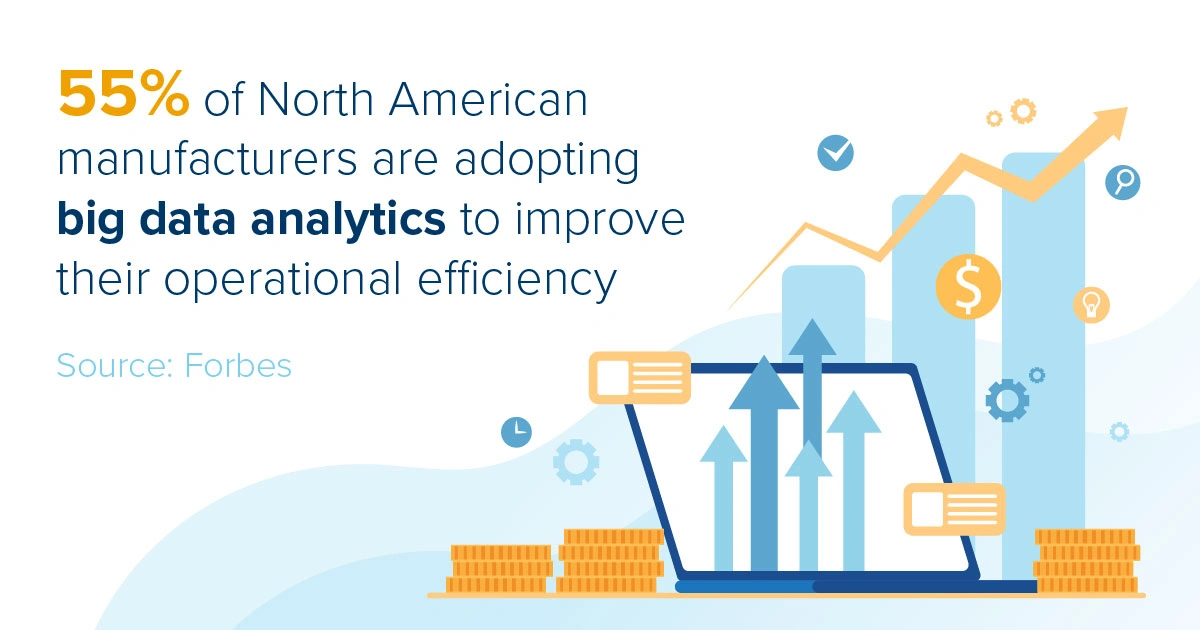Break the silos, lose the spreadsheets, and discover data-driven market power
Tell the truth. How dirty is your data? If you’re like a lot of companies, it’s filthy. And that’s a tremendous problem in a world of big data. Experian reports that 89% of B2B executives thought their inaccurate data was damaging their ability to satisfy customers. According to Gartner, dirty data is costing the average business a whopping $9.7 million annually.
Data is your racing fuel
Your ability to grow begins with your data—it tells you how your products are selling and who is buying. Siloed, irregular data slows you to a crawl. It doesn’t connect the dots powerfully enough to provide strategic insight.
To harness, exploit, and ultimately profit from data, manufacturers need to deploy analytic solutions that integrate artificial intelligence and machine learning with Enterprise Resource Planning (ERP) systems.Predictive modeling and prescriptive analytics rely on historical data to define patterns of behavior and affinities of customers and/or products. The key to making it all work is data hygiene.
As the saying goes…garbage in, garbage out. Conversely…high-quality data in, high-quality intelligence out. And that’s what drives accurate business discovery and forecasting. Data-derived-and-tested analytical models yield ‘what-if’ scenarios, optimized pricing, and can help identify the most profitable distributor incentive programs.
Gathering Intelligence Via Your Rebate Program
Have you tried using your rebate program to gather customer intelligence? Distributors are typically unwilling to share much of their customer data, but asking them to reveal inventory levels, ZIP codes, their selling price, and their regional sales profiles in exchange for a rebate will help you paint a clearer picture for future planning. At least you’re gaining some intel in return for a rebate you would have given anyway.
Incentivizing Supply Chain Partner Retention
One way that distributors routinely interact with manufacturers is through claim processing. What percentage of those transactions are positive experiences for the distributors? If a manufacturer had to grade its efficiency and distributors’ satisfaction, how would the manufacturer fare? It is estimated that if just one supply chain partner complains about an issue, there are 26 partners who won’t reveal how they feel. Instead, they will just quietly leave. Improved customer experience and ease of doing business can have a direct impact on a distributor’s satisfaction, loyalty, and contract longevity.
Transparency between manufacturers and distributors ensures the distributors are able to:
- See their claim statuses in real time
- See which claims are being rejected
- See the reason why claims are being rejected
- Maintain a streamlined process to file disputes and close out claims faster
But that’s not all. Built-in online transparency means the distributors can see:
- Available trade promotion funds
- Current contract details
- The delta between their current achievement and the next performance tier
- Marketing collateral and training materials
- Loyalty program membership status
